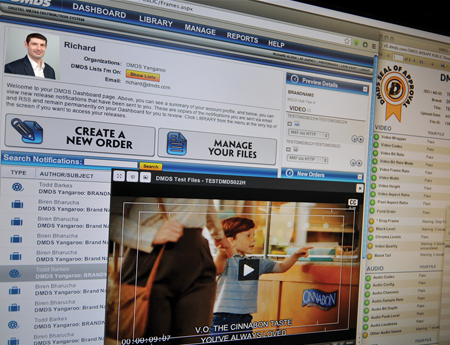Efficiency Now Comes Special Delivery

The business of delivering ads into stations, networks and multichannel operators has been undergoing a quiet revolution in the last year and a half with myriad providers investing heavily in new technologies and companies they hope will greatly streamline the process.
So far in 2014, Mediaocean launched the Optica campaign management software platform, Extreme Reach completed a $485 million acquisition of digital media service provider DG, and a number of players, such as the Comcast AdDelivery service, have announced alliances to expand their international influence.
Extreme Reach’s DG acquisition created the world’s largest cross-platform ad delivery network in the TV industry with annual revenue of about $250 million. Since the close of the deal in March, Fred Cunha, VP of broadcast relations reports that the pace of innovation and deployments of new products has speeded up, with digital delivery of long-form direct response ads having launched in June.
“We are really pushing the convergence piece,” he says. “We already have television, digital and talent [rights management] all in one platform.”
Forget the Fax
Automating delivery is another key focus at all the providers. “The No. 1 conundrum hitting clients on both sides of the equation, agencies and media companies, is how to handle video in an omni [or multiplatform] environment,” says Sarah Foss, president of the advertising division for digital distributor Yangaroo. “Right now many people do not have effective systems and have to deal with many things manually.”
Foss says Yangaroo sees itself as the filling in the Oreo cookie between agencies and media companies, using a cloud-based platform to streamline the delivery and management of ads from the agencies, deep into the infrastructure of the media companies. Deployments at two networks have already made their ad infra structures much more efficient, she says.
The smarter way to stay on top of broadcasting and cable industry. Sign up below
Such efforts are important because the process of sending all the instructions of placing ads in stations and networks continues to be a fairly manual process, relying on phone calls, faxes and emails.
This is not only extremely inefficient, creating many opportunities for errors, explains Mike Palmer, senior VP at Optica, but it also presents a major problem going forward, with cross-platform campaigns set to become more important and addressable ad systems capable of more accurately targeting consumers being widely deployed. “The current traffic systems can’t scale to handle addressable where you might have 1,000 or 10,000 ads with slightly different messages,” Palmer says.
Mediaocean, which has deployed software systems in agencies that handle the delivery of about $100 billion worth of ads per year, launched its Optica ad delivery platform this past January to help streamline the process. It is currently working with a number of companies and vendors to tightly integrate the delivery into existing traffic systems.
Work is also underway to streamline the delivery of long-form direct response ads, which are still often sent on tape to stations and networks. Steven Schachter, VP of business development and distribution at Cannella Response Television explains that they began deploying servers for digital delivery in 2009 and now can digitally send them to over 200 locations. “It eliminates the cost of ingesting and handling tapes and frees up station personnel for other responsibilities.”
SETTING SALES STANDARDS
Among the standardization efforts underway to streamline the delivery of ads, one of the most notable is the agreement between SAG-AFTRA and advertisers requiring that all ads made under union contracts incorporate Ad-ID. The mandatory adoption agreement went into effect on March 31.
Several groups are also at work on standards to make different systems more interoperable and to develop a “digital slate” meant to contain basic metadata about the ads, notes Fred Cunha, VP of broadcast relations at Extreme Reach.
Providers are also adding support for BXF 3.0, which would allow ad placement instructions to be sent digitally along with the file so they can be played out automatically without manually typing those instructions into the system. “This could be a game-changer at the local stations, but I don’t think we are there yet,” says Cunha. “Traffic systems are still working on implementation and figuring out the right balance between the automated and manual process.”
